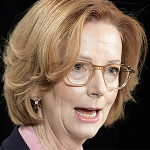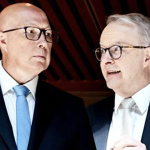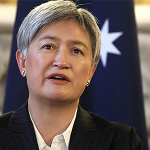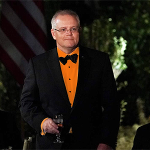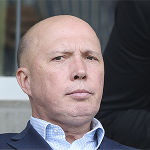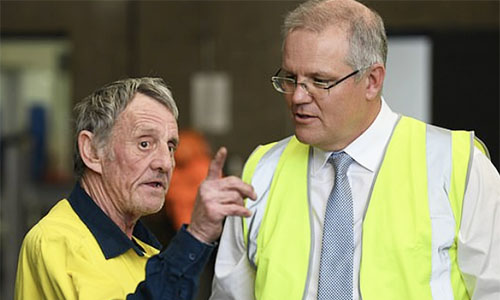
IT’S only a few months ago that green-left types, including quite a few journalists, took delight in sneering at Scott Morrison as “Scotty from marketing”. Now, however, a more appropriate term would be “ScoMo for the workers”.
It was around the turn of the 20th century that the Australian Labor Party was created out of the trade union movement. For many decades Labor presented itself as the friend of the working class, as did the trade unions.
But that’s quite some time ago, as the labour movement’s response to the coronavirus pandemic demonstrates.
MENZIES
No person or organisation is responsible for Australia’s economic plight. The Morrison government acted in accordance with medical advice that COVID-19 was a pandemic and chose to close Australia’s border with China.
The first decision was taken ahead of the World Health Organisation; the latter against the WHO’s advice at the time. Both initiatives were correct — and timely.
Australia’s last crisis took place when World War II began in September 1939 during the time political conservative Robert Menzies was prime minister.
Labor, under the leadership of John Curtin, refused to take part in a war cabinet. When Curtin became prime minister in October 1941, he did not invite the opposition into a national government.
Consequently, Morrison’s decision to announce what he termed a national cabinet in late February — comprising the heads of federal, state and territory governments — was very much a first for Australia.
Despite the coexistence of Coalition and Labor heads of government, the new entity has worked well. Its first apparent significant disagreement turns on the reopening of schools. This illustrates the new divide in Australian politics.
Unlike some other nations, Australia took a middle-road response at the onset of COVID-19. Senior Coalition ministers convinced the national cabinet to adopt a whitelist rather than a blacklist with respect to the lockdown. In other words, instead of listing businesses that could remain open, the national cabinet listed only those that were required to close. This limited the extent of the economic shutdown.
LOCKDOWN
Like Australia, New Zealand benefits from being isolated at a time of pandemic.
Under Jacinda Ardern, New Zealand went for a near total lockdown. Australia, on the other hand, kept open as many industries as possible. Since, per capita, the impact of the virus on each nation is about the same, it appears that the Australian approach is sound.
But the problem remains. An unintended consequence of the lockdown has seen elected officials and their advisers close down large sections of the private sector with the restrictions implemented by police, local government rangers and the like. In the process, entrepreneurial Australians running big, medium and small businesses have suffered a significant hit that, in some cases at least, will prove fatal.
Then there are the personal and medical impacts of social distancing. Some Australians live in large, comfortable homes or apartments. Others live in small homes with few amenities. Some Australians live with partners and/or children. Others live alone. Some have access to outdoor areas. Not so some others. It’s much the same as schooling. The wealthier and better educated a household is, the better equipped it is to deal with home schooling. It’s the children of the poor and less well-off who suffer most from school closures. Plus parents of children with disabilities.
In days of old when Labor Party and trade union leaders focused on the needs of lower-income earners and those in genuine need of welfare, it would be expected that both organisations would be in the vanguard of getting children back to the classroom.
Yet today it is the Labor governments of Victoria (Premier Daniel Andrews) and the ACT (Chief Minister Andrew Barr) that have been most reluctant to support the Prime Minister’s attempts to open the schools as soon as possible. They have the backing of the teachers’ unions, in particular the Australian Education Union.
As The Australian reported earlier this month, a recent Treasury analysis reveals that classroom closures have contributed to more than 300,000 job losses and a three per cent hit to economic activity. Put simply, parents who have to mind children cannot get to work, even if employment is available.
The reluctance of some Labor leaders to reopen schools, with the broad support of the teachers’ unions, is in defiance of the advice from the Australian Health Protection Principal Committee that it is safe to do so. And so a situation has developed whereby teachers in government schools on full pay oppose reopening schools to the disadvantage of private and public sector employees alike, including parents of special-needs children.
TERRIFIED
The public-private sector divide on the impact of COVID-19 is evident in the media coverage.
Asked about what her listeners were saying about school closures on ABC television’s Insiders program on April 26, ABC Radio Melbourne presenter Virginia Trioli said teachers were terrified about going back to school. She seemed unaware that listeners of commercial radio stations in cities and towns might have had a different response to reopening of schools.
On the same program, another panel discussed whether schools should open. Right at the end of the program, presenter David Speers announced the “breaking news” that a government school in Victoria “will have to shut because of a coronavirus case”. Whereupon panellist Patricia Karvelas, another ABC presenter, stated “that changes everything doesn’t it”.
It didn’t. It turned out that the teacher who contracted COVID-19 did so outside the school and had no contact with students.
Meanwhile the Andrews government in Victoria appears to have mishandled a serious breakout of COVID-19 at a Melbourne abattoir.
The Morrison government is focused on the rights of all employees, including those who are not professionals and who work in the private sector. Its aim is to have as many people who want to work at work. That was the priority of the Labor Party and the trade union movement at the time of the last pandemic. But, alas, not today.PC


